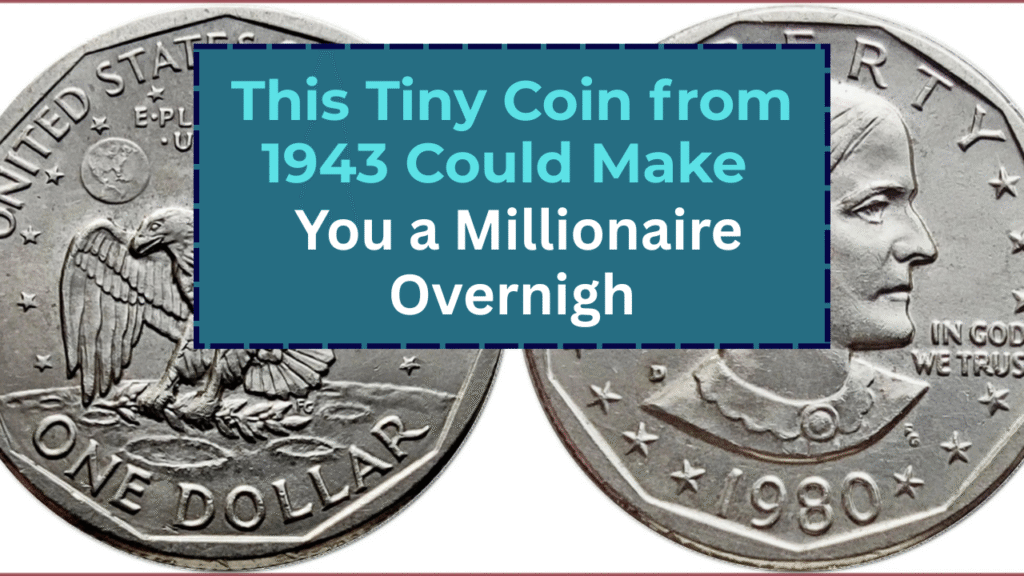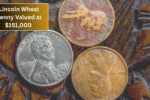A rare 1943 penny, mistakenly struck in bronze instead of zinc-coated steel, is turning heads in the coin-collecting world. One of the most famous error coins in American history, this rare Lincoln cent has been valued at up to $4.2 million, and there’s a slim chance one could be hiding in an old piggy bank or tucked away in a forgotten coin jar.
The Penny That Defied Wartime Orders
During World War II, copper was a critical war material used in munitions, wiring, and other essential supplies. To conserve the metal for the war effort, the U.S. Mint decided to make pennies using zinc-coated steel in 1943 instead of the usual copper alloy.
However, a small number of copper planchets the blank discs used to strike coins were mistakenly left in the coin presses when production switched to steel. These planchets were fed into the machines and stamped with the 1943 design, resulting in a few bronze pennies from that year. Experts estimate that only about 20 of these error coins exist.
Why Is It Worth Millions?
The coin’s astronomical value stems from its extreme rarity, historical significance, and widespread interest among collectors. In recent years, one of these rare 1943 bronze pennies sold at auction for a staggering $1.7 million. More recently, reports have surfaced suggesting that a collector valued a particularly pristine specimen at $4.2 million.
While most Lincoln pennies from 1943 are made of steel and are only worth a few cents to a few dollars depending on condition, the bronze version is in a league of its own. The key difference is in the metal content, which can be tested using a simple magnet steel cents will stick, while the rare bronze penny won’t.
How to Spot a Real 1943 Bronze Penny
If you’re now racing to check your coin collection or even the change in your wallet, here’s how to know what to look for:
- Date: It must say 1943.
- Color: The rare version has a reddish or brown hue, not the silvery tone of steel pennies.
- Magnet test: Steel pennies are magnetic. If your 1943 penny isn’t, it could be a valuable bronze one.
- Weight: A steel penny weighs about 2.7 grams, while a bronze one weighs around 3.1 grams.
- Authentication: Counterfeits exist. If you think you’ve found one, it’s best to have it evaluated by a reputable coin grading service.
A Teen’s Lucky Find
One of the most well-known stories linked to the 1943 bronze penny involves a 16-year-old student named Don Lutes Jr. In 1947, he found one of these rare pennies in his school cafeteria change and kept it for decades. Though the U.S. Mint initially told him the coin was fake, later evaluations proved it was genuine. In 2019, Lutes’ penny was auctioned for $204,000.
Are More Still Out There?
Yes it’s believed that a few 1943 bronze pennies might still be floating around in private collections, jars of old coins, or even in everyday circulation. While extremely rare, the possibility is not zero. With so many coins minted during the wartime years, it’s entirely possible a few escaped detection.
Other versions of the error penny also exist. A small number of 1944 pennies were accidentally struck on leftover steel planchets from 1943 the reverse of the 1943 bronze error. These too are highly valuable and sought after by collectors.
What to Do If You Think You Have One
If you believe you may have a 1943 bronze penny, the first step is not to clean it doing so could decrease its value significantly. Instead:
- Do a magnet test. If it doesn’t stick, you might be onto something.
- Check the weight. Use a precise digital scale to see if it weighs around 3.1 grams.
- Seek expert help. Contact a well-known coin authentication service such as the Professional Coin Grading Service (PCGS) or Numismatic Guaranty Company (NGC).
- Don’t rush to sell. Take your time to research and choose a reputable auction house or dealer if the coin is proven to be genuine.
A Lesson in Everyday Treasure
The tale of the 1943 bronze penny is more than just a quirky numismatic anecdote it’s a reminder that extraordinary things can hide in plain sight. Whether you’re a serious collector or someone who’s just curious about what’s in your coin jar, this story shows how one tiny detail can turn an ordinary coin into a multimillion-dollar treasure.
So the next time you get change at the grocery store or dig into an old jar of pennies, take a moment to look closely. You might just be holding history and a small fortune in the palm of your hand.




